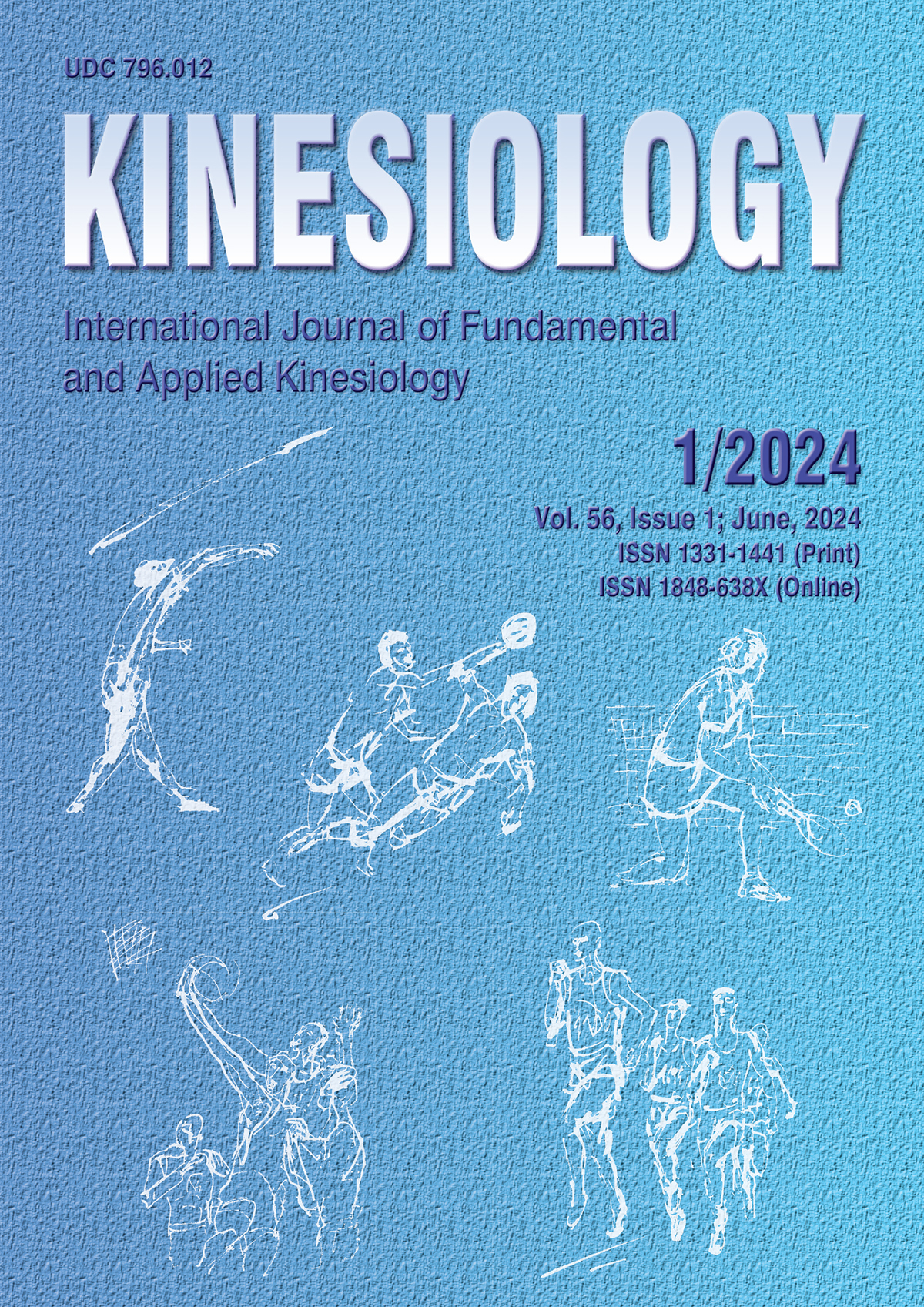THE EFFECTS OF ATTENTIONAL FOCUS INSTRUCTIONS ON THE PERFORMANCE OF A PERSISTENT FORM-BASED SKILL IN GYMNASTICS
Keywords:
focus of attention, movement form, motor performance, gymnasticsAbstract
External relative to internal focus instructions have been shown to be more effective for enhancing optimal performance across various motor tasks that do not rely on movement quality or movement form. The aim of this study was to examine the effects of an external versus an internal focus of attention on the motor performance of a gymnastic skill that requires static strength and movement form. Participants with previous experience in aerobic gymnastics were asked to perform an L-support task for 4 seconds in three attentional focus conditions: internal focus, external focus, and control, with the order counter-balanced across focus conditions. Two pieces of yellow tape (2×9 cm) were attached to the gymnasts’ feet on the inner side of the navicular bones. Two pieces of red tape (2×9 cm) were wrapped around the distal phalanx of the big toes of the right and left foot. All participants performed four trials in the external focus (focus on keeping red tape below the yellow tape), internal focus (focus on pointing your toes), and control (no-focus) conditions. The results showed that execution faults were smaller in the external focus condition compared to the internal focus and control conditions. No difference was found between the internal focus and control condition. The findings of this study indicate that the external focus is more beneficial than the internal focus and no-focus control condition for enhancing the performance of a static gymnastic skill that requires static strength and movement form.
Keywords: focus of attention, movement form, motor performance, gymnastics
Downloads
Published
How to Cite
Issue
Section
License

This work is licensed under a Creative Commons Attribution-NonCommercial 4.0 International License.
At Faculty of Kinesiology we recognize that access to quality research is vital to the scientific community and beyond. Kinesiology is non-profit journal and all costs of publishing and peer review process are covered by the publisher itself or other funding sources like Ministry of Science and Education of the Republic of Croatia. Full text papers are also available free of charge at http://hrcak.srce.hr/kineziologija. There are no restrictions on self archiving of any form of paper (preprint, postprint and publisher's version).
Articles are distributed under the terms of the CC BY - NC 4.0
Kinesiology does not charge any fees to authors to submit or publish articles in our journal.


